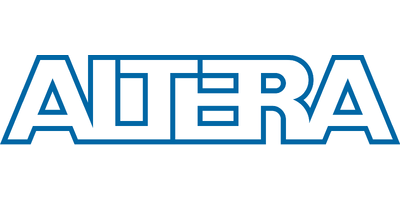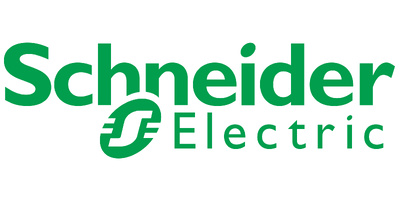LM1875
20W Audio Power Amplifier
General Description
The LM1875 is a monolithic power amplifier offering very low
distortion and high quality performance for consumer audio
applications.
The LM1875 delivers 20 watts into a 4Ωor 8Ωload on ±25V
supplies. Using an 8Ωload and ±30V supplies, over 30
watts of power may be delivered. The amplifier is designed
to operate with a minimum of external components. Device
overload protection consists of both internal current limit and
thermal shutdown.
The LM1875 design takes advantage of advanced circuit
techniques and processing to achieve extremely low distor-
tion levels even at high output power levels. Other outstand-
ing features include high gain, fast slew rate and a wide
power bandwidth, large output voltage swing, high current
capability, and a very wide supply range. The amplifier is
internally compensated and stable for gains of 10 or greater.
Features
nUp to 30 watts output power
nA
VO
typically 90 dB
nLow distortion: 0.015%, 1 kHz, 20 W
nWide power bandwidth: 70 kHz
nProtection for AC and DC short circuits to ground
nThermal protection with parole circuit
nHigh current capability: 4A
nWide supply range 16V-60V
nInternal output protection diodes
n94 dB ripple rejection
nPlastic power package TO-220
Applications
nHigh performance audio systems
nBridge amplifiers
nStereo phonographs
nServo amplifiers
nInstrument systems
Connection Diagram
00503001
Front View
Package Ordering Info NSC Package
Number
For Straight Leads LM1875T
SL108949
T05A
For Stagger Bend LM1875T
LB03
T05D
For 90˚ Stagger
Bend
LM1875T
LB05
T05E
For 90˚ Stagger
Bend
LM1875T
LB02
TA05B
Typical Applications
00503002
July 2002
LM1875 20W Audio Power Amplifier
© 2002 National Semiconductor Corporation DS005030 www.national.com
Absolute Maximum Ratings (Note 1)
Supply Voltage 60V
Input Voltage −V
EE
to V
CC
Storage Temperature −65˚C to + 150˚C
Junction Temperature 150˚C
Lead Temperature
(Soldering, 10 seconds) 260˚C
θ
JC
3˚C
θ
JA
73˚C
Electrical Characteristics
V
CC
=+25V, −V
EE
=−25V, T
AMBIENT
=25˚C, R
L
=8Ω,A
V
=20 (26 dB), f
o
=1 kHz, unless otherwise specified.
Parameter Conditions Typical Tested Limits Units
Supply Current P
OUT
=0W 70 100 mA
Output Power (Note 2) THD=1% 25 W
THD (Note 2) P
OUT
=20W, f
o
=1 kHz 0.015 %
P
OUT
=20W, f
o
=20 kHz 0.05 0.4 %
P
OUT
=20W, R
L
=4Ω,f
o
=1 kHz 0.022 %
P
OUT
=20W, R
L
=4Ω,f
o
=20 kHz 0.07 0.6 %
Offset Voltage ±1±15 mV
Input Bias Current ±0.2 ±2µA
Input Offset Current 0 ±0.5 µA
Gain-Bandwidth Product f
o
=20 kHz 5.5 MHz
Open Loop Gain DC 90 dB
PSRR V
CC
, 1 kHz, 1 Vrms 95 52 dB
V
EE
, 1 kHz, 1 Vrms 83 52 dB
Max Slew Rate 20W, 8Ω, 70 kHz BW 8 V/µs
Current Limit V
OUT
=V
SUPPLY
−10V 4 3 A
Equivalent Input Noise Voltage R
S
=600Ω, CCIR 3 µVrms
Note 1: “Absolute Maximum Ratings” indicate limits beyond which damage to the device may occur. Operating Ratings indicate conditions for which the device is
functional, but do not guarantee specific performance limits.
Note 2: Assumes the use of a heat sink having a thermal resistance of 1˚C/W and no insulator with an ambient temperature of 25˚C. Because the output limiting
circuitry has a negative temperature coefficient, the maximum output power delivered to a 4Ωload may be slightly reduced when the tab temperature exceeds 55˚C.
Typical Applications
Typical Single Supply Operation
00503003
LM1875
www.national.com 2
Typical Performance Characteristics
THD vs Power Output THD vs Frequency
00503009 00503010
Power Output vs Supply
Voltage
Supply Current vs Supply
Voltage
00503011 00503012
PSRR vs Frequency
Device Dissipation vs
Ambient Temperature†
00503013 00503014
†φINTERFACE = 1˚C/W.
See Application Hints.
LM1875
www.national.com3
Typical Performance Characteristics (Continued)
Power Dissipation vs
Power Output
Power Dissipation vs
Power Output
00503015 00503016
I
OUT
vs V
OUT
-Current Limit/
Safe Operating Area Boundary
Open Loop Gain and
Phase vs Frequency
00503017 00503018
Note 3: Thermal shutdown with infinite heat sink
Note 4: Thermal shutdown with 1˚C/W heat sink
Input Bias Current
vs Supply Voltage
00503019
LM1875
www.national.com 4



